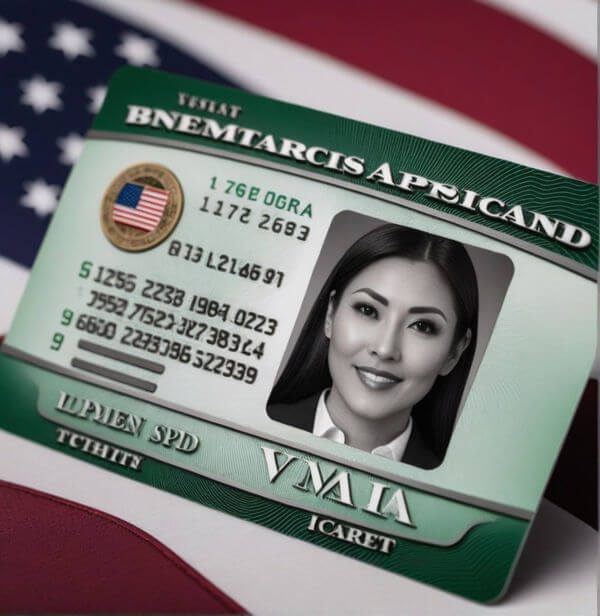
Step-by-Step Guide to Completing Form I-765 for Employment Authorization

Understanding Form I-765: The Key to U.S. Employment Authorization
Form I-765, known as the “Application for Employment Authorization,” is a critical step for foreign nationals aiming to secure the legal right to work in the United States. This form is essential for those awaiting green card approval and seeking employment in the interim. By obtaining an Employment Authorization Document (EAD), individuals can demonstrate their work eligibility to potential employers. For those applying for a family-based green card from outside the U.S., such as with a CR1 visa, a separate work permit is not required before entry; work authorization is automatically granted upon entering the U.S. and receiving a green card. However, for individuals without a work-eligible immigration status (e.g., H-1B visa holders), it’s crucial to refrain from any paid employment until the EAD is received. Fortunately, applying for a work permit through Form I-765 is a straightforward process, especially when filed concurrently with a green card application. This guide will detail the costs, expected timeline, and steps involved in the application process for Form I-765, providing a clear pathway to employment authorization in the U.S.
Form I-765 Fees
The standard fee to file Form I-765, which is the Application for Employment Authorization, stands at $410. However, the total cost of obtaining a work permit may vary, as some applicants are required to also pay an $85 biometrics fee. This additional fee raises the overall expense of the application process to $495 for certain categories.
Applicants Who Must Include a Biometrics Fee:
Specific groups need to factor in the biometrics fee along with their application for a work permit. These include:
Individuals applying under the Deferred Action for Childhood Arrivals (DACA) program.
The principal beneficiaries of approved employment-based immigrant petitions who are in compelling circumstances. Spouses or unmarried children of principal beneficiaries of approved employment-based immigrant petitions. It’s essential for applicants to review their specific filing category carefully, as this determines whether the additional biometrics fee applies to them. This guide aims to clarify the costs associated with filing Form I-765, ensuring applicants are well-informed about the financial aspects of applying for work authorization in the U.S.
Exemptions and Waivers for Form I-765 Filing Fees
Filing Fee Exemptions:
Individuals filing a work permit application alongside their Adjustment of Status (AOS) to a green card, where the Form I-485 has been submitted post-July 30, 2007, are not required to pay the filing fee for Form I-765. This fee exemption policy is subject to potential changes in 2023, as proposals to revise immigration fees are under consideration. Detailed information on fee exemptions can be found in the Form I-765 instructions, which list all categories eligible for this benefit.
Requesting a Fee Waiver
For applicants facing financial hardship and unable to cover the filing fee, the USCIS provides an option to apply for a fee waiver. This involves submitting Form I-912 (Request for Fee Waiver) alongside the Form I-765 application and necessary supporting documents. Upon approval of the fee waiver, applicants will be exempt from both the filing and biometrics fees, effectively reducing their cost to $0. This provision aims to ensure that financial constraints do not hinder eligible individuals from applying for work authorization in the United States.
Navigating Changes in USCIS Fees for Employment Authorization (Form I-765)
The U.S. Citizenship and Immigration Services (USCIS) has proposed a fee increase across a wide array of immigration applications, including the Application for Employment Authorization (Form I-765). Traditionally, submitting a Form I-765 alongside an Adjustment of Status (AOS) application (Form I-485) incurred no additional charge if the Form I-485 was filed post-July 30, 2007. However, with the new proposal set for 2023, the filing fee for Form I-765 is anticipated to rise to $650. This represents a significant 59% increase from the prior $410 fee. Although the implementation date is yet to be confirmed, it could be as early as the summer of 2023.
Fee Exemptions and Waivers: Who’s Eligible?
Applicants filing Form I-765 as part of an Adjustment of Status package submitted after July 30, 2007, are typically exempt from the filing fee. Additionally, the Form I-765 instructions list other categories eligible for fee exemptions.
Seeking Relief through Fee Waivers
For applicants facing financial difficulties, USCIS provides the option to apply for a fee waiver. By submitting Form I-912 (Request for Fee Waiver) along with Form I-765 and necessary documentation, eligible applicants can have both the filing and biometrics fees waived, reducing the cost to zero.
Impact of Fee Increases on Processing and Strategy
The proposed fee adjustments come at a time when USCIS is experiencing processing delays, with the average time to process Form I-765 extending to approximately 6.7 months due to a growing backlog. With fees slated to rise significantly, applicants are encouraged to submit their applications before the new rates take effect to avoid additional costs. This shift in fee structure is crucial for applicants to consider in their planning and submission strategy to ensure timely and cost-effective processing of their work authorization in the U.S.
Eligibility Criteria for Form I-765
The U.S. Citizenship and Immigration Services (USCIS) stipulates that individuals eligible for a family-based green card automatically qualify for a work permit as well. If you have an active application for a green card (Form I-485) in process, you’re entitled to apply for a work permit alongside it. For a comprehensive overview of the various categories that meet the eligibility criteria for Form I-765, refer to the detailed instructions provided with the form.
Filing Guide for Form I-765
To apply for a work permit using Form I-765, submit it alongside your green card application (Form I-485) or after receiving a notice from USCIS that your green card application has been acknowledged. Along with a completed Form I-765, include two passport-sized photographs if applying simultaneously with your green card. If applying after your green card submission, ensure to attach a copy of the USCIS receipt notice for your Form I-485. It’s crucial to send your application to the correct USCIS service center, following the specific instructions for Form I-765 filing. When Form I-765 is filed in conjunction with another application like the I-485, both documents must be directed to the address provided for the accompanying form. This meticulous approach ensures your work permit application is processed efficiently, minimizing delays. Remember, accurate and complete submissions expedite processing times, bringing you closer to obtaining your employment authorization.
Checklist for Documents in Form I-765 Applications
To successfully file Form I-765 for an Employment Authorization Document (EAD), ensure you gather the following required items:
- A copy of both sides of your I-94 travel record, if applicable, or an electronic I-94 printout from the U.S. Customs and Border Protection (CBP).
- A copy of the visa page in your passport, evidencing U.S. entry permission.
- The photo page of your passport.
- Copies of any previous EADs, if you have had any, showing both the front and back.
- Two recent passport-style photographs measuring 2x2 inches. Write your name and Alien Registration Number on the back of each photo with a pencil or felt-tip pen.
- A copy of the receipt notice from USCIS confirming that your green card application (Form I-485) is in process. This is necessary if:
- a) Your petition is through a green card holder sponsor.
- b) You’re applying for an EAD after filing for your green card through a U.S. citizen sponsor, which is less common.
First-time applicants without prior work permits need to provide additional identification, which can be one of the following:
- Your birth certificate, accompanied by a photo ID.
- A visa issued by a consulate of a country other than the U.S., found in your passport.
- Another form of national identity document featuring your photo and/or fingerprint.
Collecting these documents before filing can streamline your application process and help avoid any delays.
Common Grounds for Work Permit Application Denial
There are several reasons why an application for a work permit (Form I-765) might be rejected. A common issue is inaccuracies within the application itself, such as errors in filling out the form, failure to sign it, or omission of necessary information. For instance, if the work permit is being applied for subsequent to a green card application, neglecting to attach a copy of the USCIS receipt notice for the green card application can lead to denial. Another, albeit rarer, reason for a work permit application to be denied occurs when the green card application is processed so swiftly that the applicant receives their green card before the work permit application is fully processed. Although unusual, this scenario eliminates the need for a separate work permit since the green card holder is already authorized to work legally in the U.S.